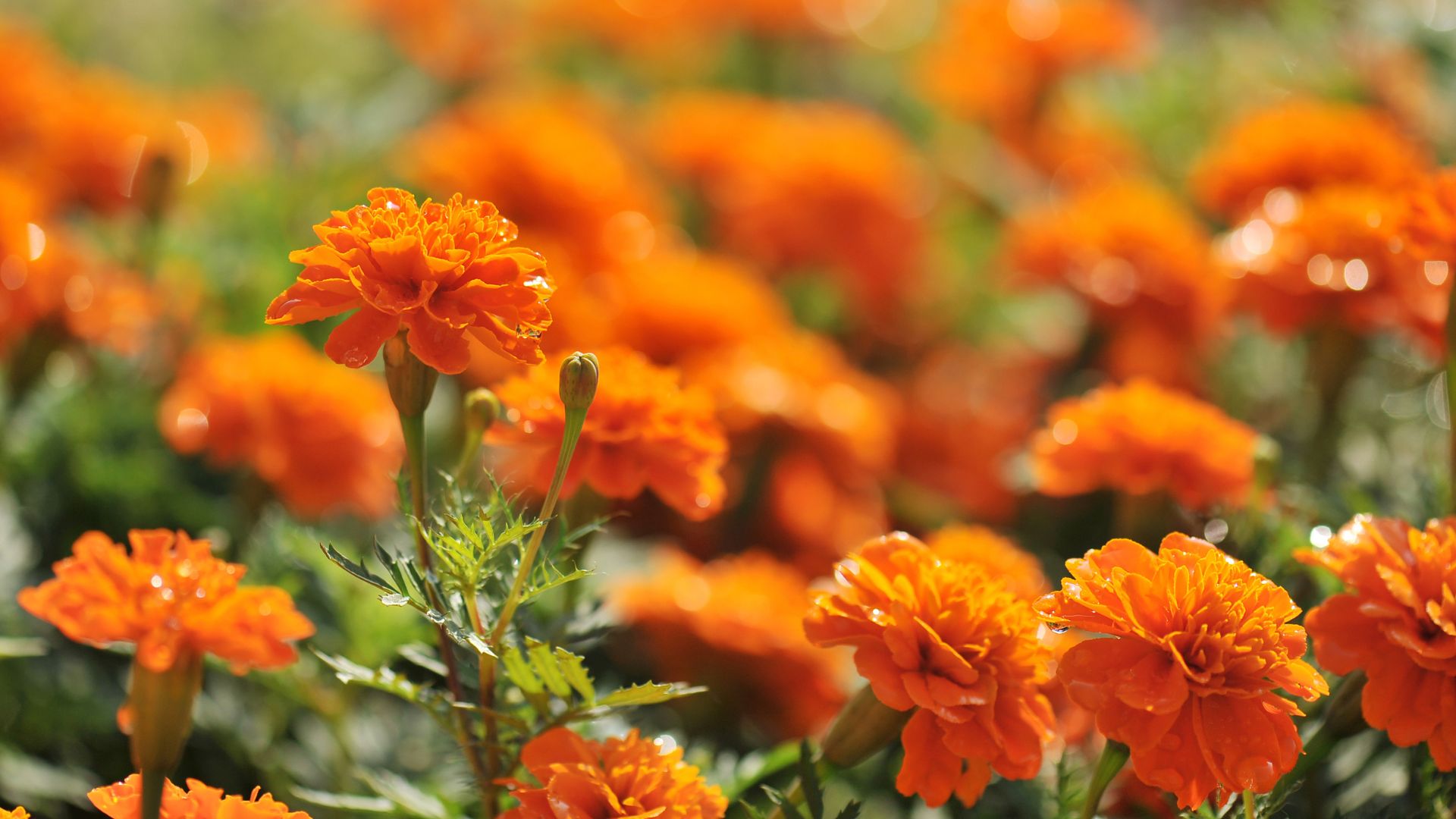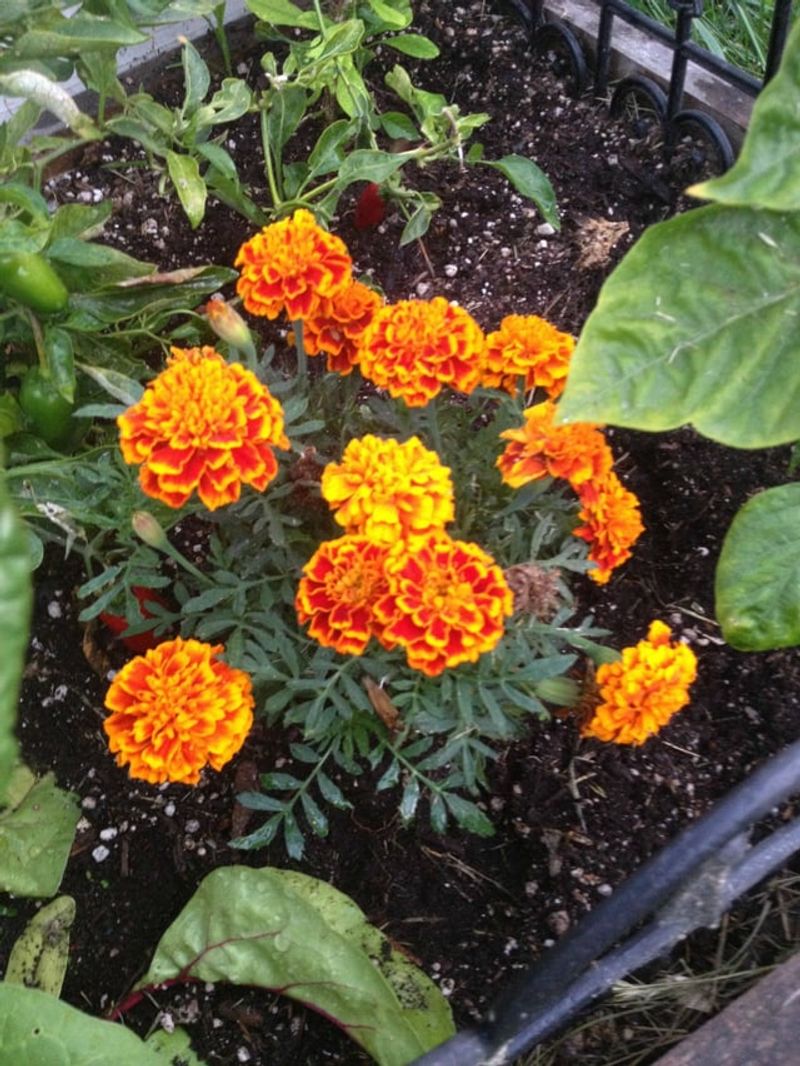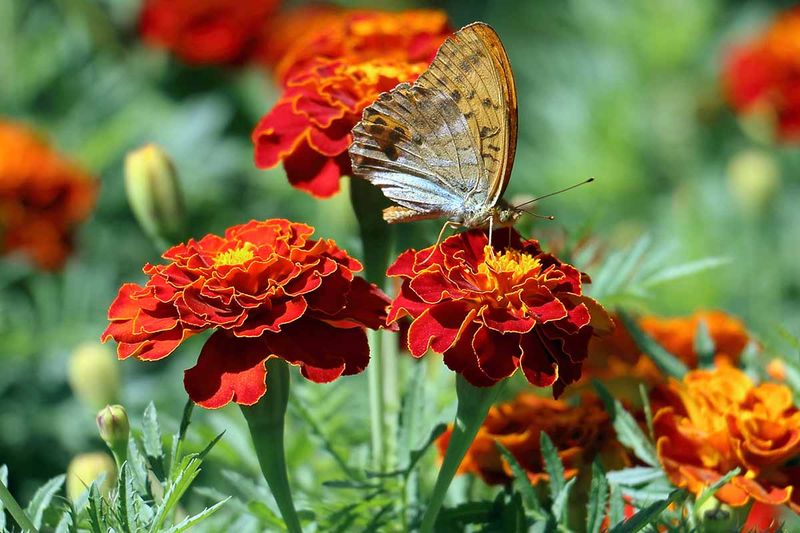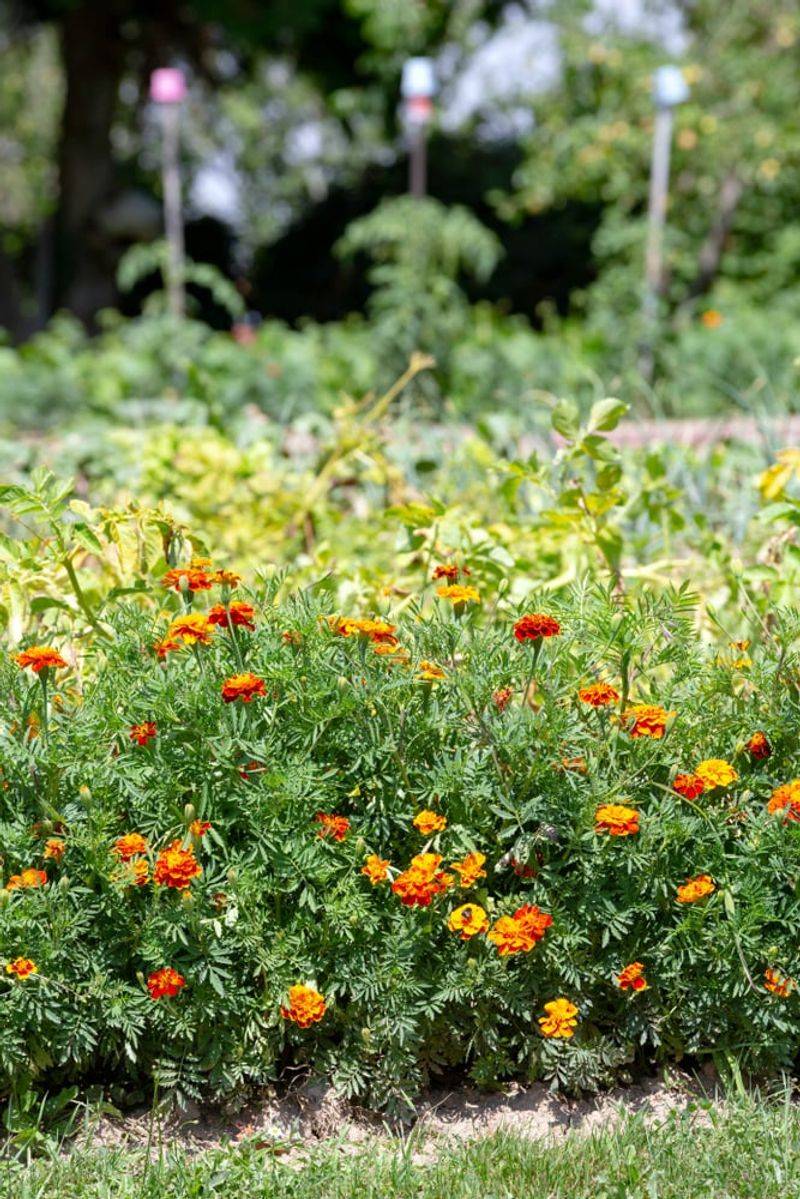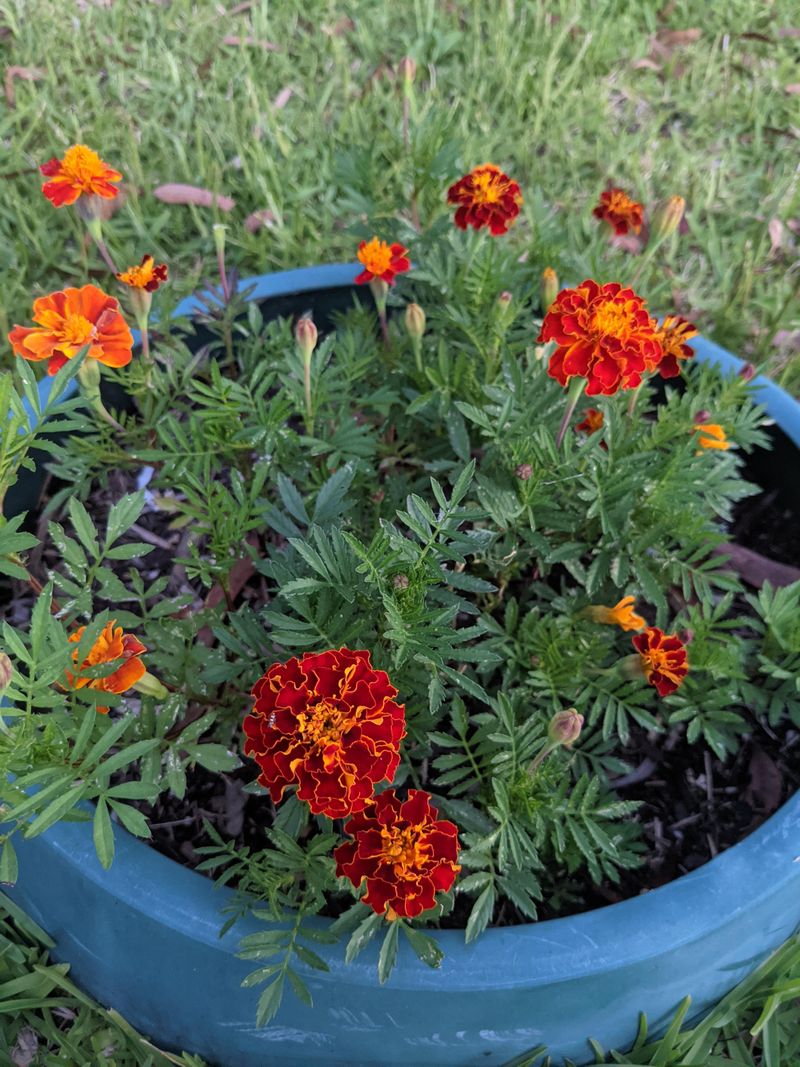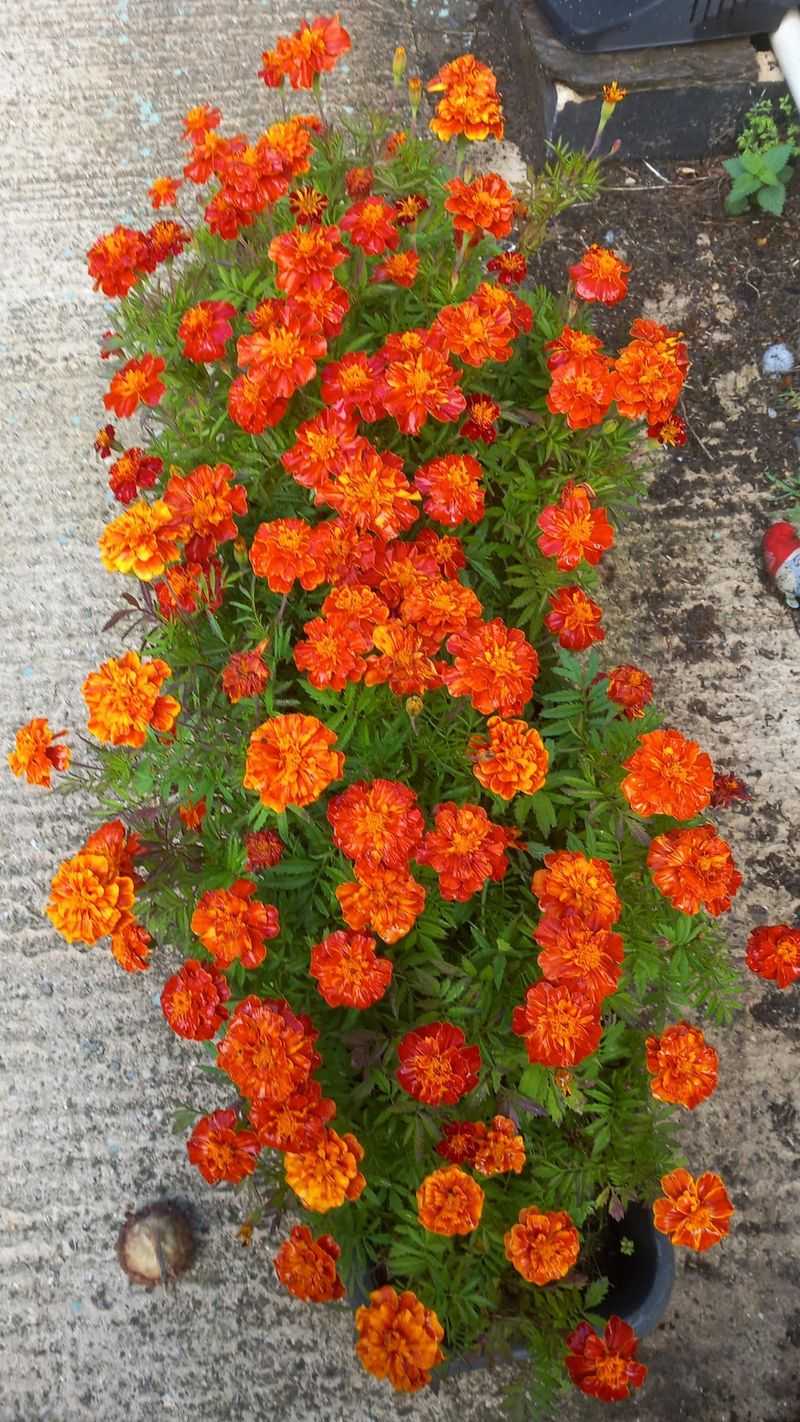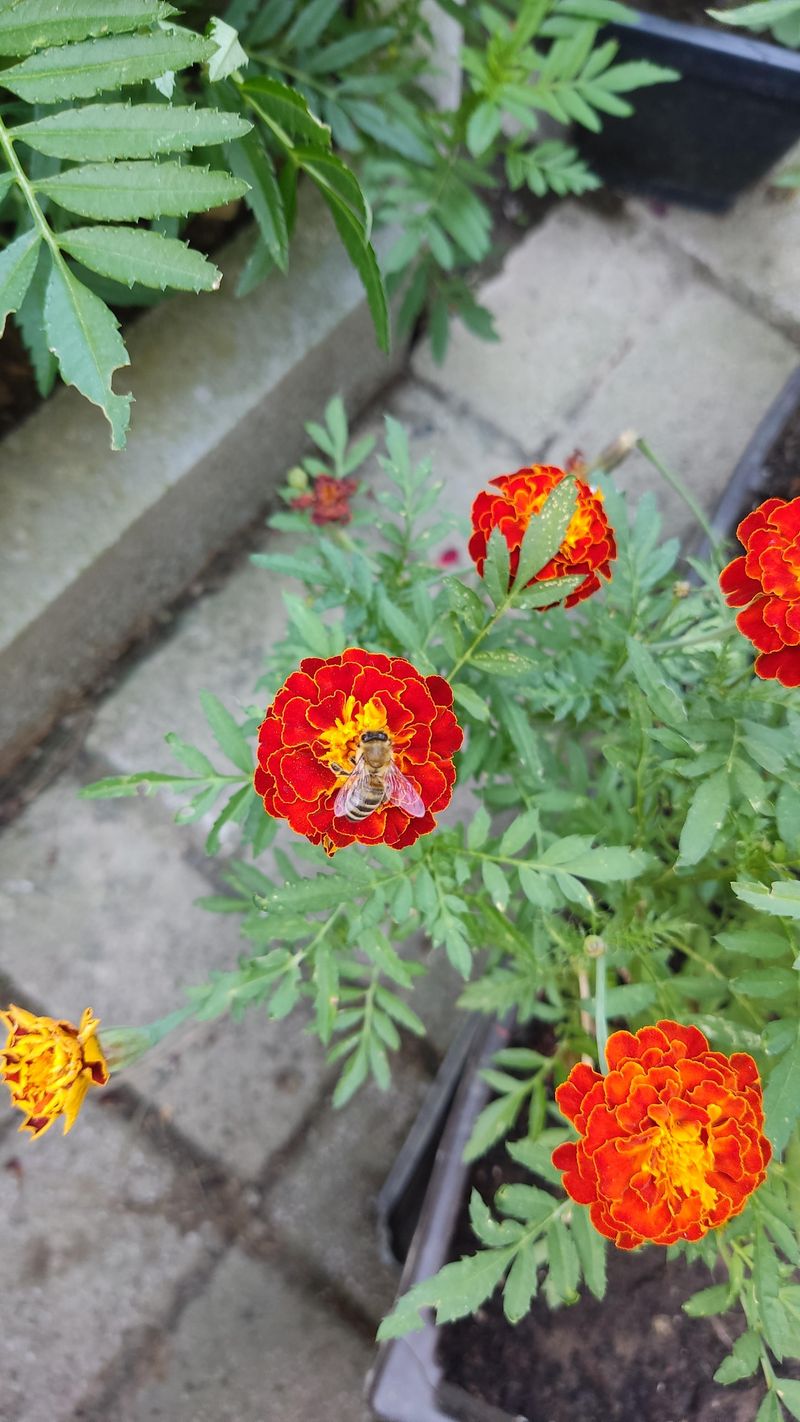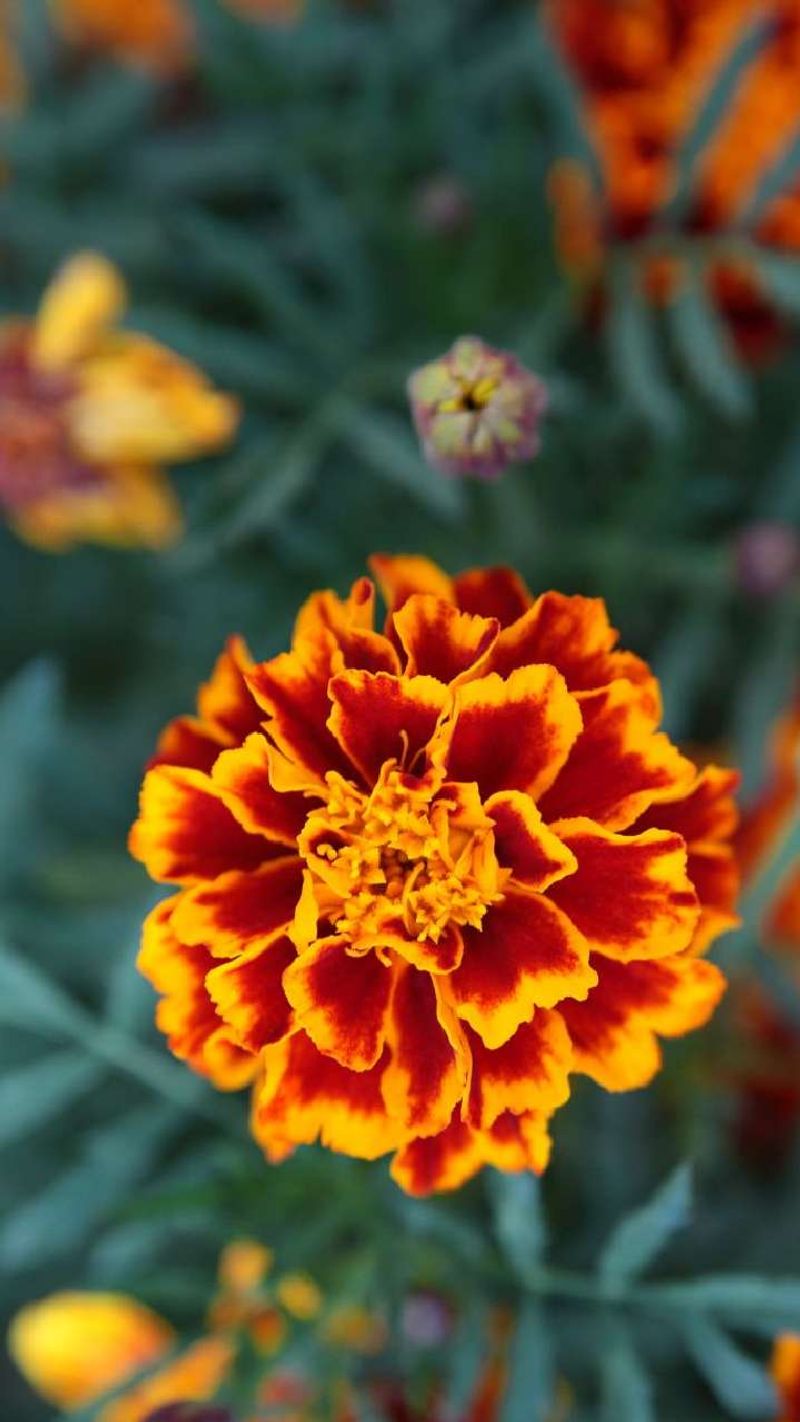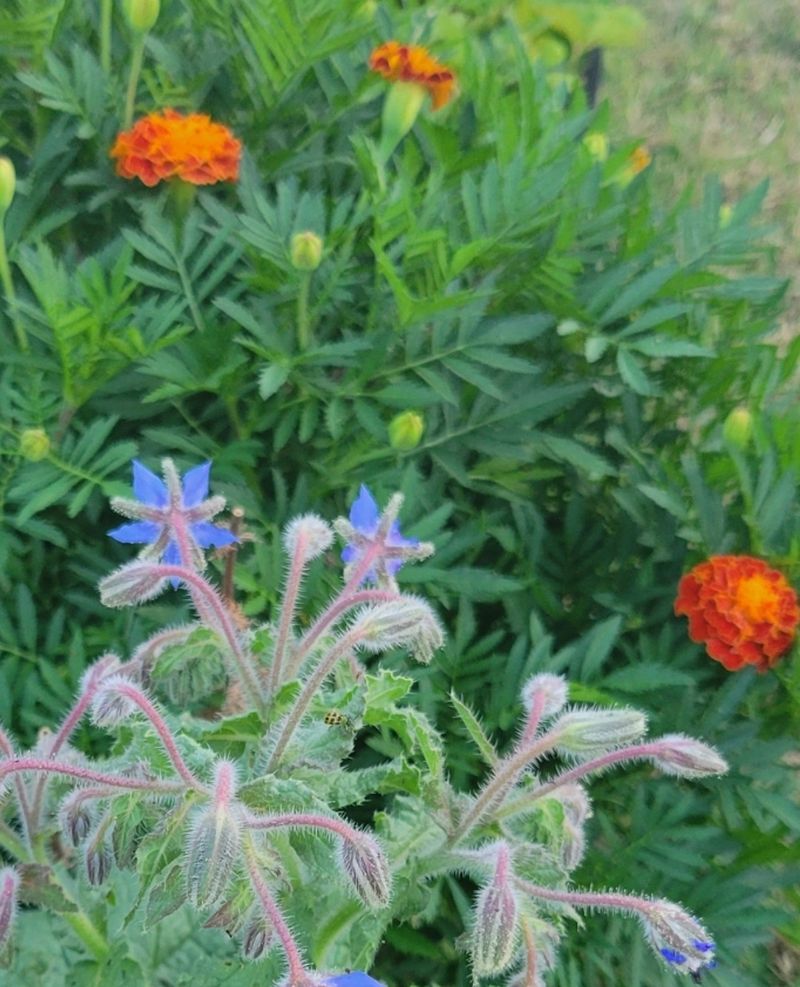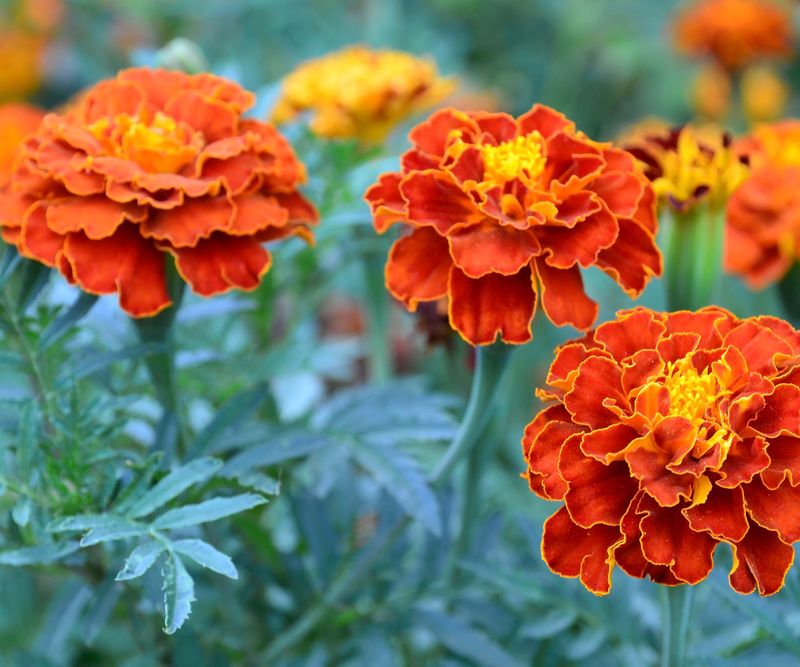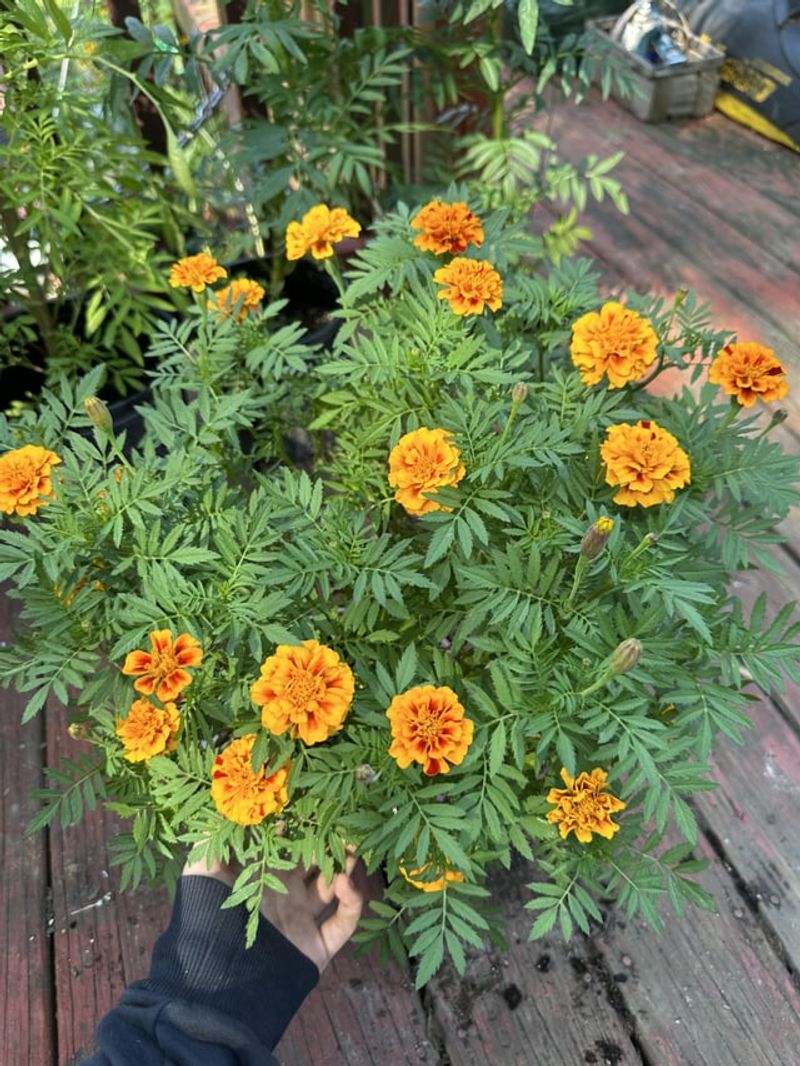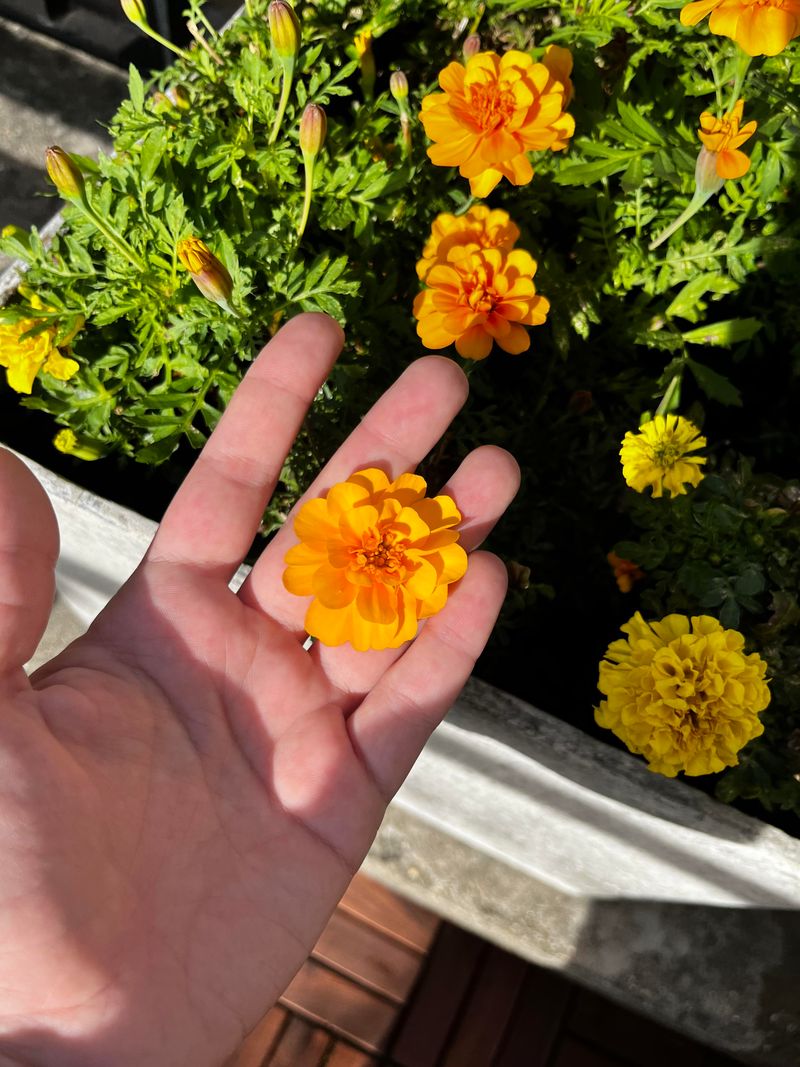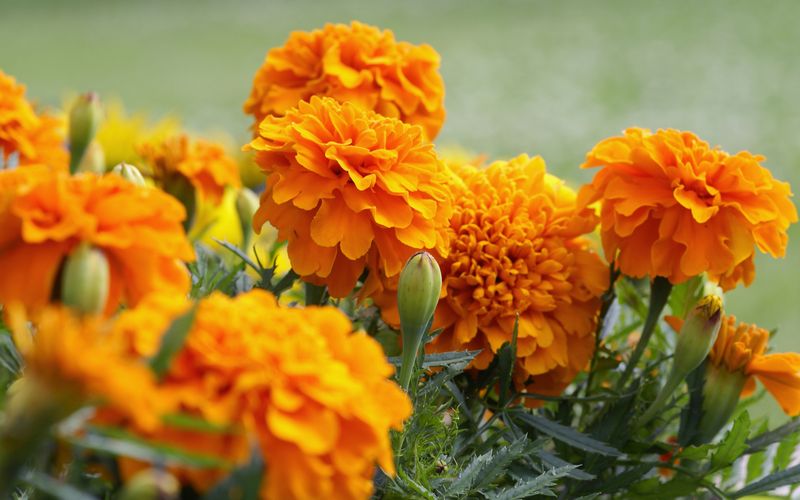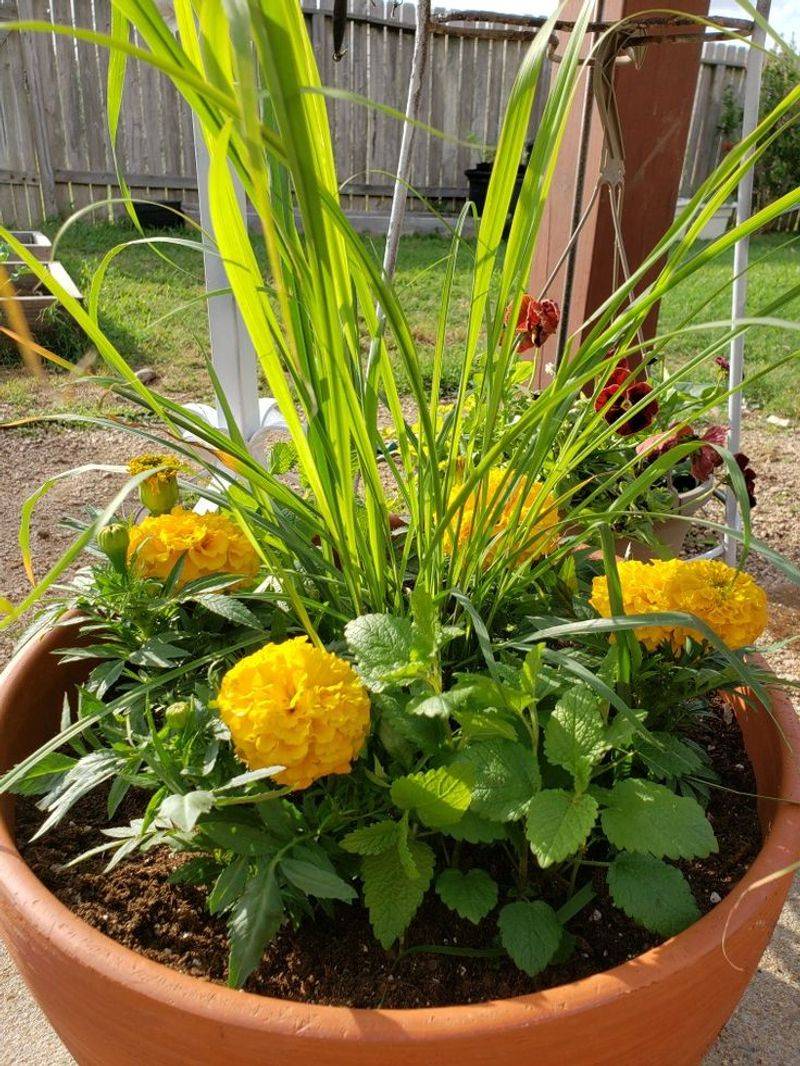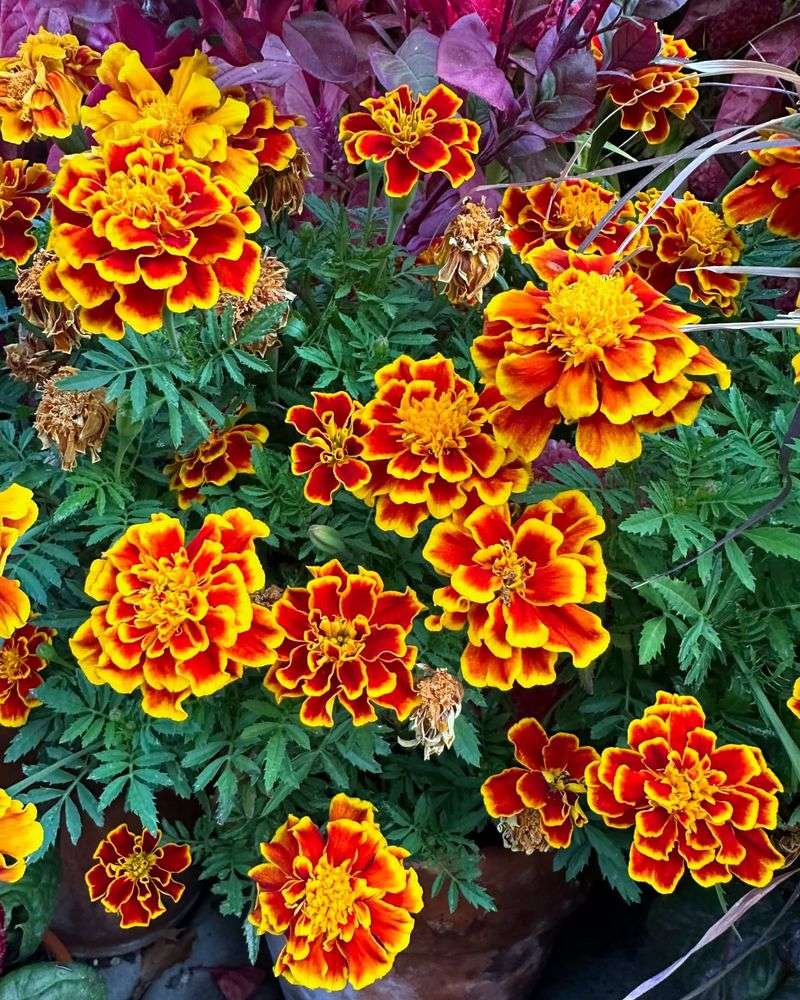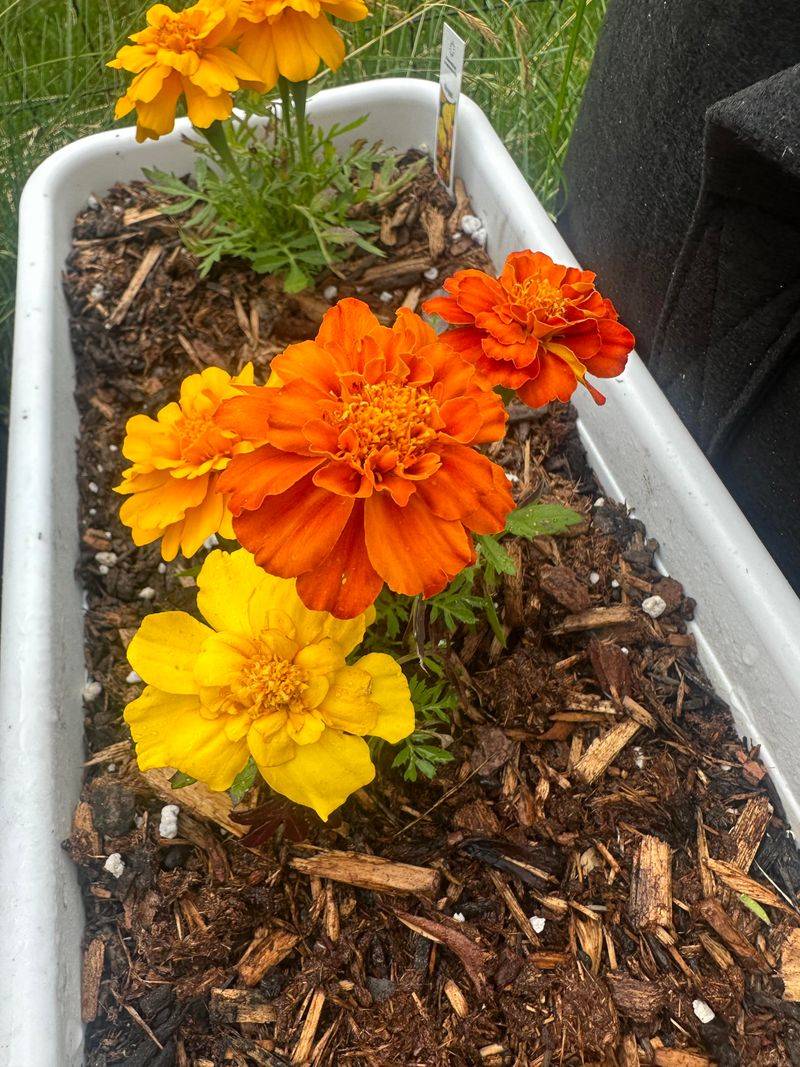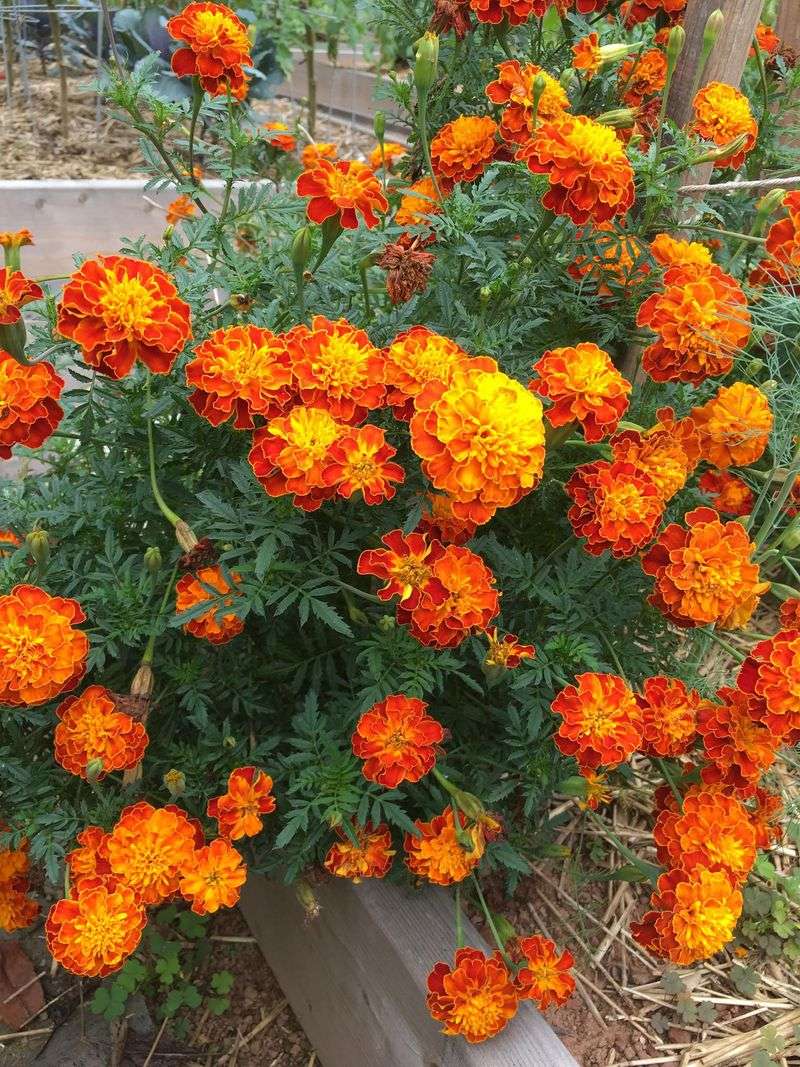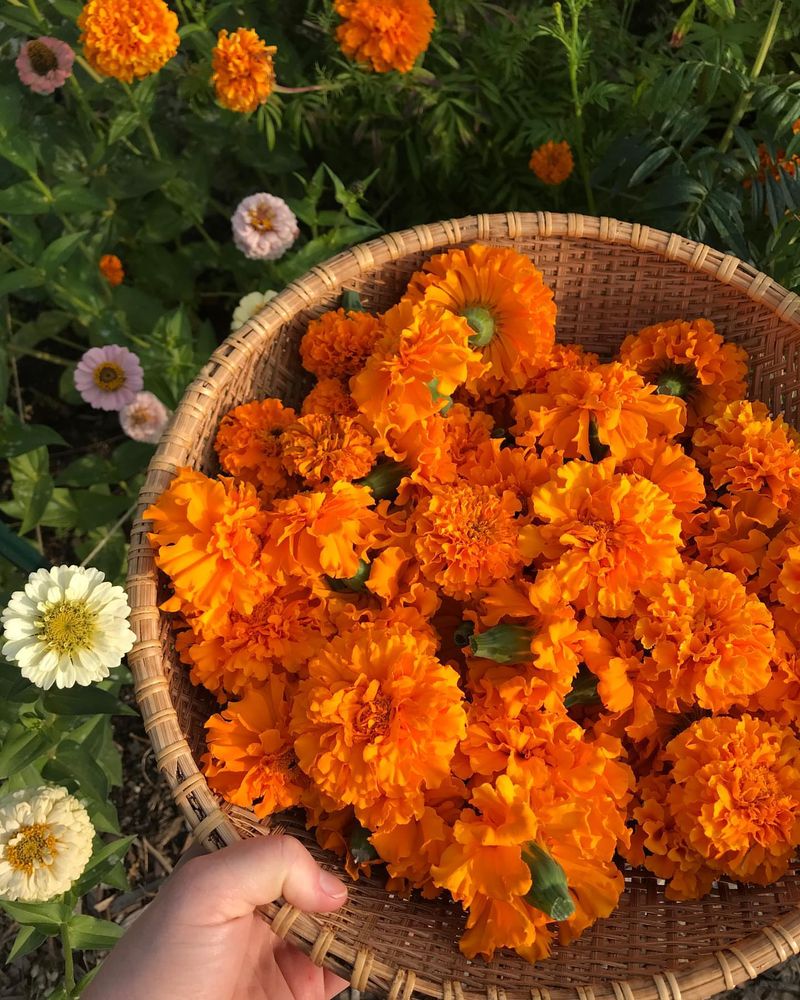I used to plant marigolds just for their cheerful color, but a neighbor once told me they helped keep mosquitoes away—and I’ve been curious ever since. They certainly look like the kind of flower that’s doing something useful with that strong, distinct scent.
Over the years, I’ve noticed fewer bugs buzzing around areas with dense marigold patches, especially near patios and seating spots. It’s not a miracle cure, but it feels like they help take the edge off mosquito season a bit.
Science backs up some of that folklore—marigolds, especially Tagetes varieties, produce compounds like limonene and pyrethrum, which can repel insects. They might not replace your citronella candle entirely, but in my experience, they’re a welcome addition to any garden defense plan.
1. The Science Behind Marigold’s Repellent Properties
These cheerful flowers contain a compound called pyrethrum, which certain insects find offensive. The distinctive scent comes from essential oils in the plant’s tissues that evolved as a natural defense mechanism.
Research has shown that pyrethrum can indeed repel some garden pests, particularly aphids and whiteflies. The compound works by attacking the nervous systems of these small invaders.
Gardeners have leveraged this natural chemistry for centuries, often planting marigolds as companions to vegetables to create a protective barrier against unwanted bugs.
2. French Marigolds Pack More Punch
Not all marigold varieties offer the same level of mosquito protection. French marigolds (Tagetes patula) contain higher concentrations of thiophene, a sulfur compound known for its insect-repelling qualities.
Studies conducted at agricultural research stations have demonstrated that these compact plants produce more of the beneficial compounds than their larger African cousins. The potency varies even among different French marigold cultivars.
I’ve found that the more pungent-smelling varieties tend to work better in my garden beds, especially those with deeply lobed, fernlike foliage.
3. Direct Contact Is Required
Simply having marigolds somewhere in your yard won’t create a mosquito-free zone. The repellent compounds don’t spread far from the plant itself, limiting their effectiveness to the immediate vicinity.
For any meaningful protection, mosquitoes must come into direct contact with the plant or its released compounds. This explains why scattered plantings often disappoint gardeners expecting whole-yard protection.
Try creating dense borders of marigolds around seating areas rather than isolated clumps if you’re hoping for some mosquito relief during evening gatherings.
4. Crushing Leaves Releases More Repellent
The volatile oils in marigold foliage become more potent when released through physical damage. Gently crushing or bruising the leaves activates these compounds, temporarily increasing their mosquito-deterring effects.
Some gardeners rub marigold leaves on exposed skin before outdoor activities, though this isn’t scientifically proven and may cause skin irritation for sensitive individuals. The practice dates back centuries in some cultures.
During summer barbecues, I sometimes place bowls of crushed marigold leaves near seating areas as a supplementary defense against the evening mosquito invasion.
5. Marigolds Target Mosquito Larvae Too
Garden ponds with marigolds planted nearby may experience reduced mosquito breeding. Compounds leaching from marigold roots into standing water can inhibit the development of mosquito larvae.
Research from the University of Florida found that water containing marigold root compounds showed up to 40% reduction in mosquito larval survival rates. This unexpected benefit adds another layer to their pest management potential.
Consider planting marigolds in containers positioned near water features or rain barrels where mosquitoes might breed.
6. Effectiveness Varies With Weather Conditions
Hot, humid days actually boost marigolds’ mosquito-repelling abilities. Higher temperatures increase the release of volatile compounds from the plants, making them more effective when mosquito activity peaks.
Conversely, cool or rainy conditions diminish these effects as less of the repellent compounds are released into the air. Wind can also quickly disperse the compounds, reducing their concentration around the plants.
During particularly muggy evenings when mosquitoes seem relentless, my marigold borders appear to perform better than on cool, dry nights.
7. Extract Sprays Offer Concentrated Protection
Homemade marigold repellent sprays concentrate the plants’ natural compounds for targeted application. Steeping marigold flowers and leaves in water creates a solution containing the essential oils that mosquitoes avoid.
The resulting spray can be applied to outdoor furniture, porch railings, and garden perimeters. Unlike chemical repellents, these natural solutions require frequent reapplication, especially after rain.
Last summer, I experimented with a marigold-basil combination spray that seemed more effective than either plant alone, though still not as powerful as commercial products.
8. Companion Planting Enhances Results
Strategic placement alongside other mosquito-repelling plants creates a more effective barrier. Combining marigolds with citronella, lavender, or basil establishes a multi-layered defense against various mosquito species.
Each plant targets different aspects of mosquito behavior through unique chemical compositions. This diversity makes it harder for mosquitoes to adapt to any single repellent compound.
My most successful mosquito-deterring garden bed contains alternating groups of marigolds, lemon balm, and catnip – creating what I call a “confusion zone” for these persistent biters.
9. Scientific Studies Show Mixed Results
Laboratory research hasn’t consistently supported marigolds’ mosquito-repelling reputation. While some studies demonstrate modest repellent effects, others find minimal impact on adult mosquito behavior or feeding patterns.
A 2018 study in the Journal of Vector Ecology found that marigold oil provided only about 20 minutes of protection against certain mosquito species. This falls far short of the hours of protection offered by DEET and other synthetic repellents.
Despite these limitations, many gardeners report subjective improvements when marigolds are present, suggesting factors beyond those measured in controlled studies may be at work.
10. Density Matters More Than Variety
Creating a thick barrier of marigolds proves more effective than scattered plantings. A continuous border containing at least three rows of plants maximizes the concentration of repellent compounds in the immediate area.
The number of plants in a given space directly correlates with protection potential. Twenty closely-spaced marigolds will likely outperform the same number spread across a larger area.
After years of experimentation, I’ve found that planting marigolds roughly 8 inches apart in dedicated mosquito barrier zones provides the best results for my suburban garden.
11. Marigolds Won’t Replace Chemical Repellents
Expecting complete mosquito protection from marigolds alone sets gardeners up for disappointment. While these flowers contribute to an integrated pest management approach, they cannot match the effectiveness of dedicated repellents.
The protection they offer tends to be localized and variable, making them a supplement rather than a replacement. Most entomologists recommend using proven repellents containing DEET or picaridin for reliable personal protection.
During family gatherings, I rely on marigolds as just one layer of defense, alongside screened areas, fans, and conventional repellents when mosquito pressure is high.
12. Certain Mosquito Species Remain Unaffected
Different mosquito species respond variably to marigold compounds. Research indicates that while some species like Aedes aegypti (yellow fever mosquito) show moderate repellent responses, others appear completely unaffected.
Local mosquito populations may develop regional adaptations, further complicating effectiveness predictions. What works against mosquitoes in one geographic area might fail in another due to species distribution.
Friends in coastal areas report less success with marigolds against salt marsh mosquitoes than I’ve experienced with our inland species, highlighting these important biological differences.
13. Potted Marigolds Offer Strategic Mobility
Container-grown marigolds provide flexible mosquito management around patios and entryways. Large pots filled with densely planted marigolds can be positioned where people gather or near doorways during peak mosquito hours.
This mobility allows gardeners to create temporary barriers for outdoor activities without permanent garden modifications. The elevation in containers also places the repellent compounds closer to human activity zones.
Several large urns overflowing with marigolds guard my back patio during summer evenings, strategically relocated depending on where we plan to sit.
14. Timing Marigold Planting For Maximum Protection
Establishing marigolds well before mosquito season ensures plants reach peak repellent production when needed most. Starting seeds indoors 6-8 weeks before the last frost gives plants time to mature and develop higher concentrations of protective compounds.
Mature plants produce more of the essential oils that deter mosquitoes than young seedlings. By mid-summer, established marigolds reach their full protective potential just as mosquito populations typically surge.
My garden calendar always marks early March for starting marigold seeds indoors, ensuring robust plants are ready for May transplanting when mosquitoes begin to emerge.
15. Regular Deadheading Boosts Repellent Production
Removing spent blooms stimulates continued flowering and increases essential oil production. Plants focused on seed production divert energy away from generating the compounds that help repel mosquitoes.
Weekly deadheading sessions maintain vigorous growth throughout the season. This regular maintenance also prevents self-seeding, keeping marigold plantings dense rather than scattered.
I’ve noticed that my diligently deadheaded marigold borders maintain their mosquito-deterring properties longer into the season than neglected plants that have gone to seed.
16. Soil Conditions Affect Repellent Qualities
Nutrient-rich soil with moderate fertility produces marigolds with stronger repellent properties. Plants grown in poor soil may develop fewer of the specialized cells that produce essential oils.
However, excessive nitrogen fertilization can actually decrease the concentration of defensive compounds. The plants redirect energy toward lush foliage growth rather than chemical production when overfed.
My best results come from marigolds planted in average garden soil amended with compost but no additional fertilizer – they produce more intense scent than those in my enriched flower beds.
17. Traditional Knowledge Versus Modern Evidence
Generations of gardeners have planted marigolds for pest control, creating a strong cultural belief in their effectiveness. This traditional knowledge persists despite limited scientific confirmation, representing the intersection of folk wisdom and garden practice.
Modern research acknowledges marigolds’ pest-deterring properties while clarifying their limitations. The gap between perceived and proven effectiveness remains an active area of study in ethnobotany and horticultural science.
Whether they work through actual repellent properties or simply by attracting beneficial insects that prey on mosquitoes, marigolds have earned their place in my garden’s integrated pest management strategy.

